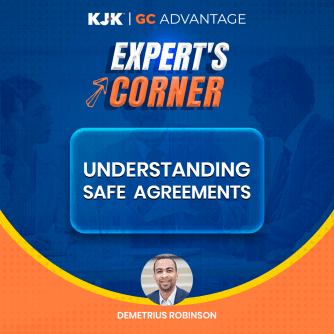
Sponsored Post by Ryan Frederick of AWH
Investors can be elusive and misunderstood by many Founders. There is a great mystery behind how some founders and startups manage to get access to investors and funding from them while others don’t. For many Founders and startups, working the normal process, if there even is one, doesn’t get them access and awareness with investors, let alone the funding they are seeking. The truth is, investors are just like everyone else and they don’t want to miss out on a good thing. The more Founders can create the fear of missing out (FOMO) with investors the more likely they are to get funding for their company.
Let’s be clear though, a startup has to be investable to begin with for investor FOMO to have any affect and to work. A startup that isn’t investable will not create any investor FOMO. Founders and startups have to be honest with themselves about whether they are investable in their current state and what they need to do differently if they want to evolve. I write more about being investable in my book, The Founder’s Manual.
Many startups think investor FOMO is about geography, especially outside of Silicon Valley, but it isn’t. Investors in the same city, state, and region are unlikely to get FOMO from an investment opportunity in their own backyard. This is in part because there just aren’t a lot of interesting and investable startups in an investor’s backyard. Another factor is most investors will get exposure to startups in their backyard through their network and from a very early stage of the company. Unfortunately, this is one of those situations where familiarity can breed contempt. A startup is highly unlikely to create FOMO with an investor that has been familiar with the company for most, if not all, of the company’s existence. Of course, there are exceptions, but I’m talking about the norm.
To better understand investor FOMO and how Founders and startups can create and leverage it, we need to think about the essence of FOMO. Ever notice how a child or dog instantly becomes interested in a toy as soon as someone else starts playing with it? Is it jealousy, a claiming of ownership or just a reminder of the toys existence that sparks the sudden interest? Nevertheless, it happens all the time without them even having to think about it. It is an instinctual reaction. People, including investors, aren’t that far removed from kids and dogs when it comes to FOMO. As adults and certainly as professionals, like investors, we want to believe that we are above and somewhat immune to it. That is only partially true. FOMO changes over time personally and professionally. For investors, FOMO is often grounded in the fear of not seeing something in a founding team and startup that other successful and well-respected investors see. You see, investing in startups is not about taking risks as much as it is about risk mitigation. There are two ways investors can mitigate risk:
1) Invest in Founders who have previously succeeded in starting and building a company.
2) Invest in companies that other successful investors find interesting and want to invest in.
If you aren’t a repeat successful Founder, then your only real option is to leverage investor FOMO.
So how do Founders and startups go about creating FOMO for investors? It’s almost always about relationships and having patience. The relationship aspect means Founders and startups need to find a way to get personally introduced to investors, so the initial outreach isn’t a cold one. Cold outreaches can work, but the odds of cultivating a relationship with an investor that is going to create FOMO among other investors via this route is highly unlikely. Establishing a relationship with an investor starts by establishing a relationship or several with people in the investors sphere of influence who the investor respects and will listen to. Relationships that can be relied upon to make introductions to others don’t happen overnight and although most Founders and startups need to raise investment ASAP, they have to play the long game when developing relationships to get access to a target investor. If a Founder is able to establish a relationship with a target investor, the Founder has to then inform the investor they intend to continue creating relationships with similar investors because that is in the best interest of their company. Quality investors will respect this, and the best ones will encourage it. The best investors know the best investments are going to be competitive and aren’t afraid to compete to engage with the company.
Little else motivates an investor to invest in a company more than FOMO, especially when another investor they respect and compete with is also interested. Investors will even ignore their typical timeline and process for making an investment if enough FOMO is present. Investors won’t admit to FOMO and they will say that they make every investment based on the mere merits of the team, problem, opportunity, and so on, but investor FOMO is as real as it is in any other situation in life. Most investments don’t work out, and in fact, lose money for investors. Many investors are able to raise investment funds off very few successes. So when an investor sees another successful investor interested in a company, it acts like a signal for them to consider the investment. Make no mistake, investors are very competitive, so a company needs to use this to their advantage when raising investment.
As part of creating investor FOMO, it is important for a startup to begin as close to the top of “successful investor” mountain as possible. This is why the relationship piece is so critical. A startup that doesn’t have a relationship with top tier investors is unlikely to get an audience with them, let alone, get them interested in investing without a warm introduction by someone an investor and investment firm trusts. Because of this, I recommend startups seeking investment create an investor roadmap. I’ve written about, and advocated for, product roadmaps and company roadmaps and now I am advocating for an investor roadmap. Sure, a startup can put a bunch of investors into a CRM to track the contacts and activities with an investor and an investment firm, but that doesn’t go far or deep enough. An investor roadmap can help a startup to identify 3 main things: 1)who the investors are that they need to be targeting, 2)the investors network of allies and supporters, and 3)who the investor competes with – where FOMO can be developed and leveraged. An investor roadmap also highlights all of the intersections of where and how different people are connected to investors and how different investors are connected to each other. For example, has an investor ever syndicated a deal that another target investor invested in and vice versa. If they have, a startup now knows the investors occasionally collaborate even if on the surface they appear to be competitors. An investor roadmap is a lot of work to create and maintain. That is probably why not many startups do it. There are a million things for a startup to be working on and an investor roadmap just adds something else to the pile. But if a startup doesn’t have any existing investor relationships and doesn’t have a well-defined path to get them, an investor roadmap is incredibly valuable.
The investor roadmap will be crucial to your company raising investment from the right investors and for creating FOMO among those investors so you can strike a deal on better terms for your company. The terms aspect is very important. When a startup is able to create FOMO among investors, the startup is much more capable of getting investment on more favorable terms to the company. The more favorable terms can be game changing for the Founders and the company. Investor FOMO helps startups to have a stronger negotiating position and to get investment on friendlier company terms.
If you are a Founder seeking investment now is the time to create an investor roadmap to build relationships with target investors and to ultimately be able to create and leverage investor FOMO. Start creating investor FOMO by working on developing relationships with people close to target investors, managing it through an investor roadmap, and getting multiple target investors interested in investing in your company.







